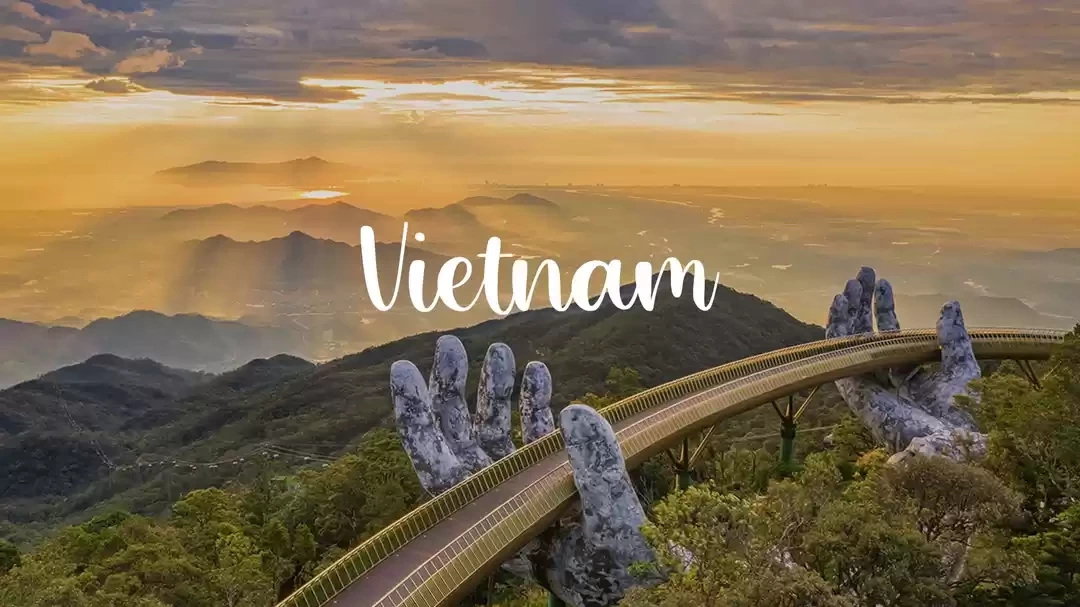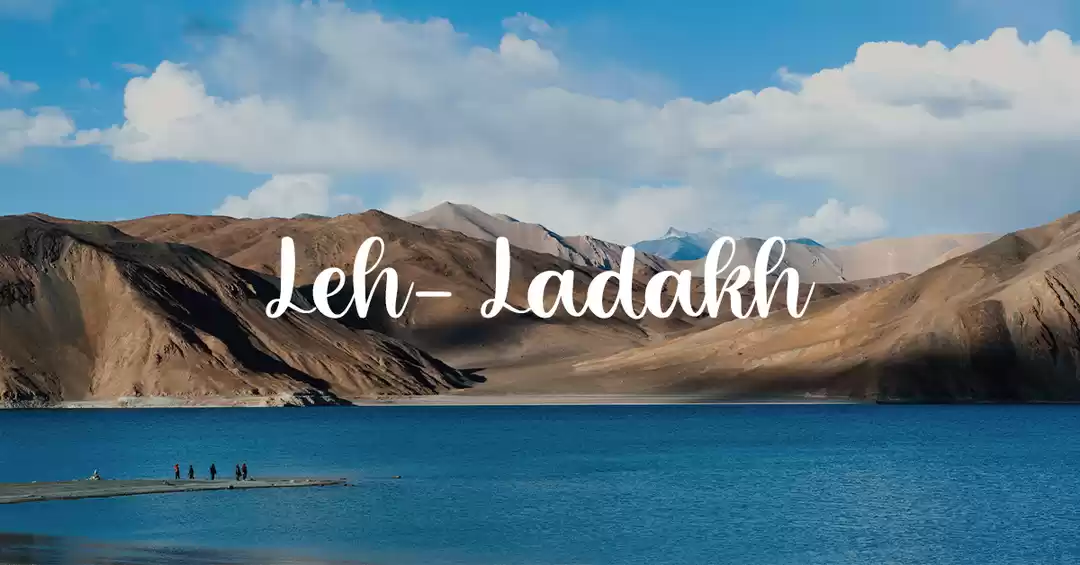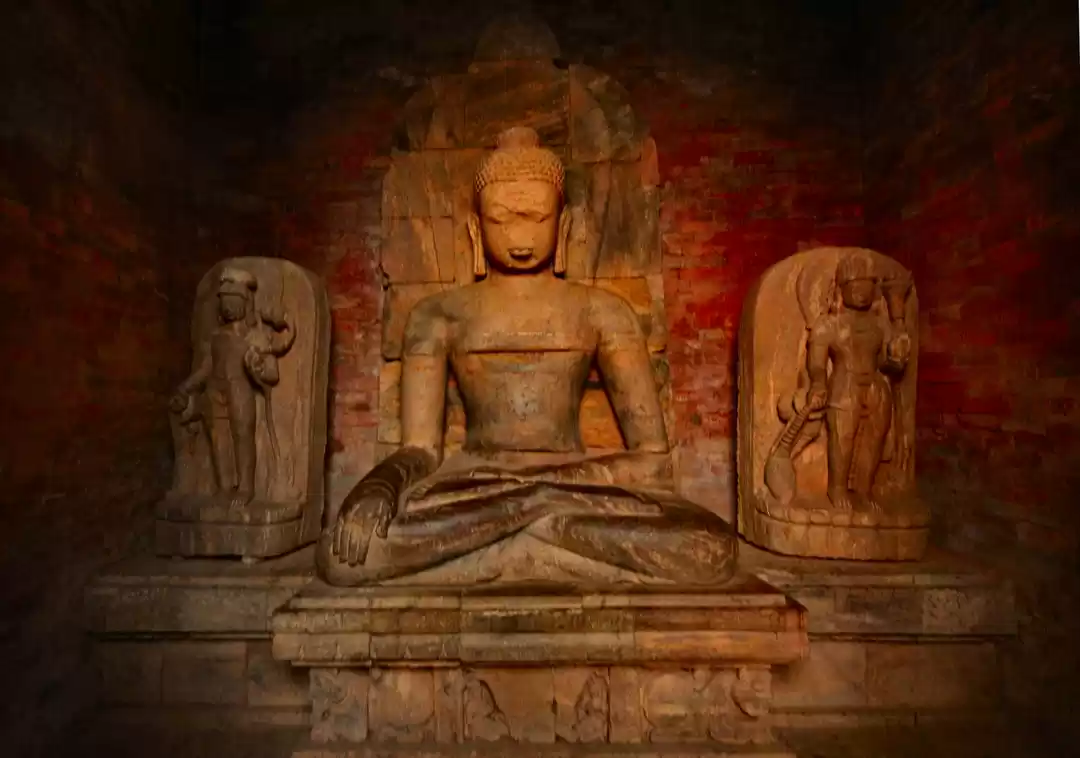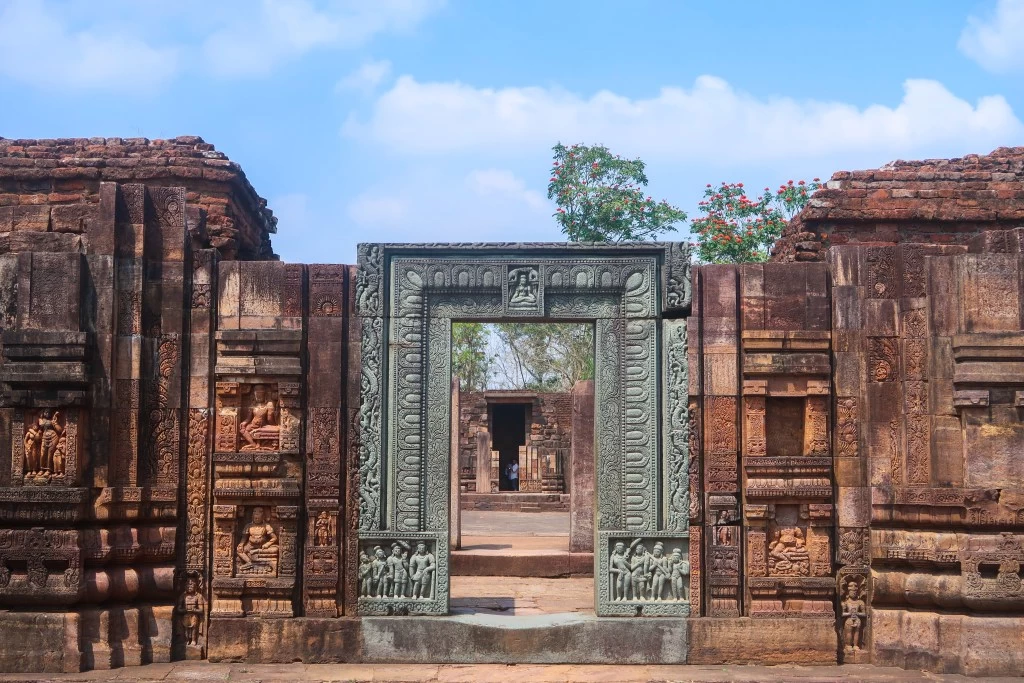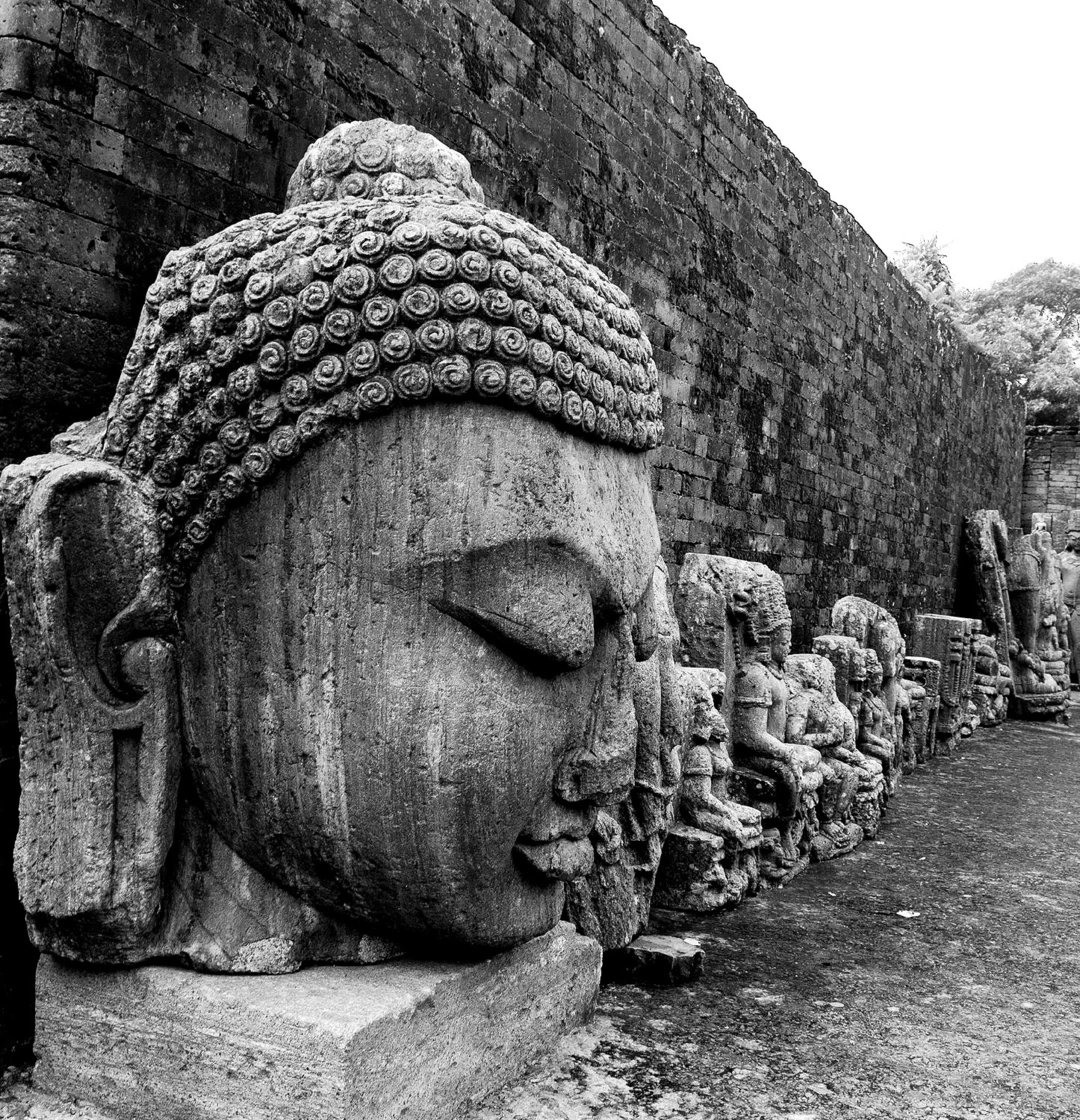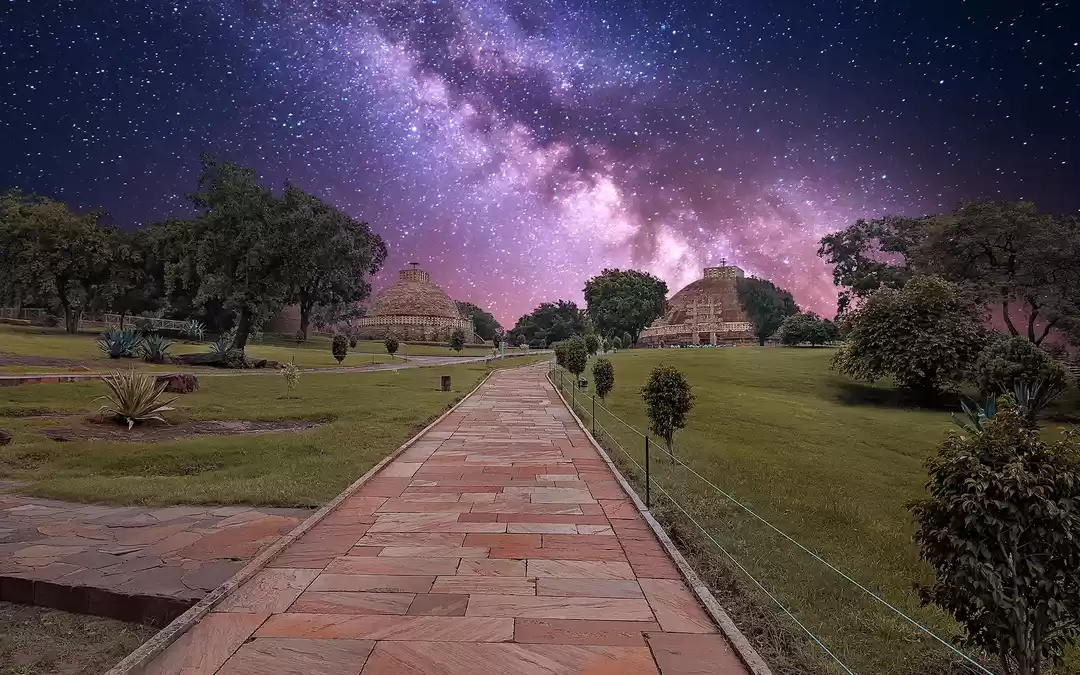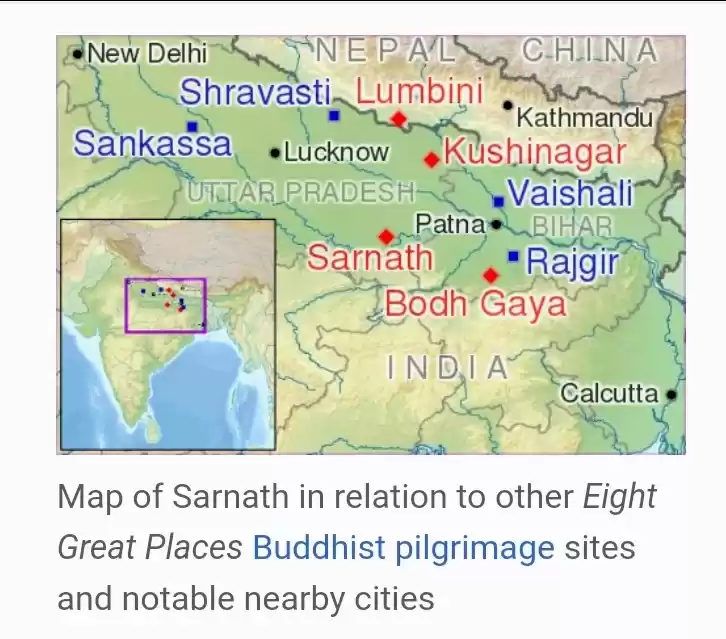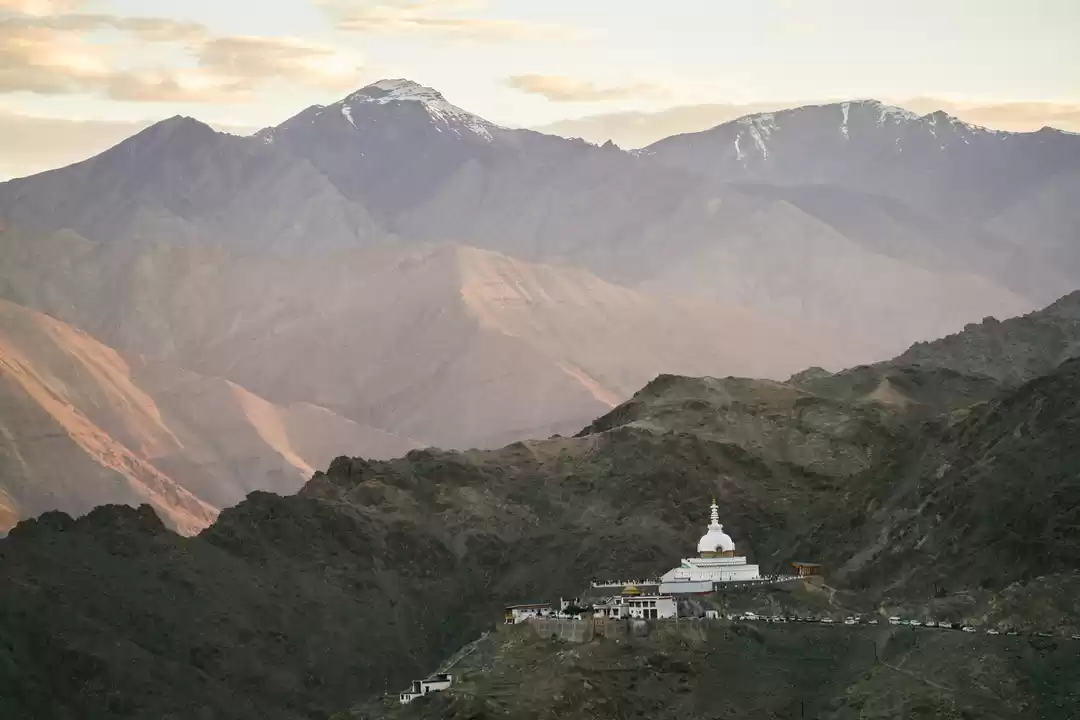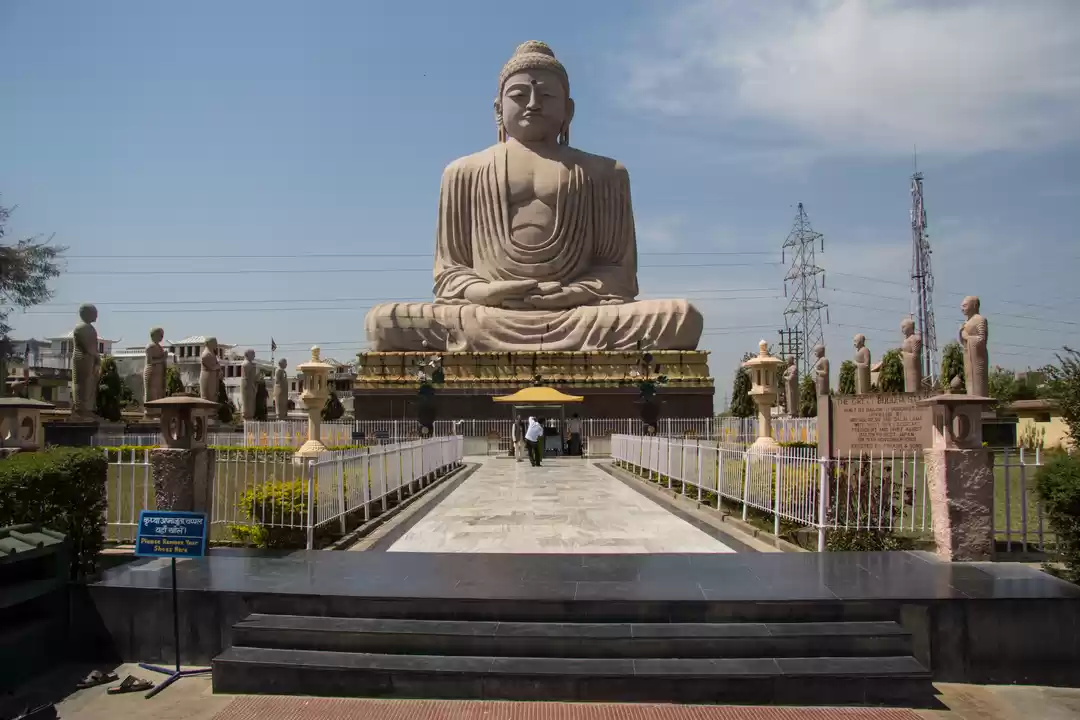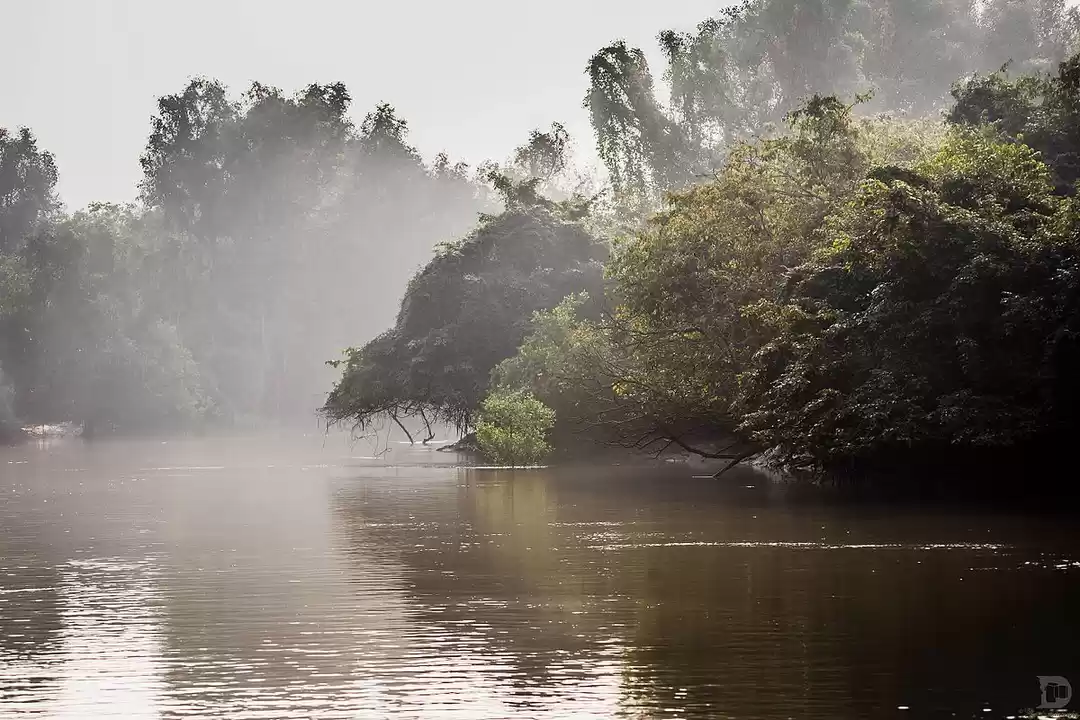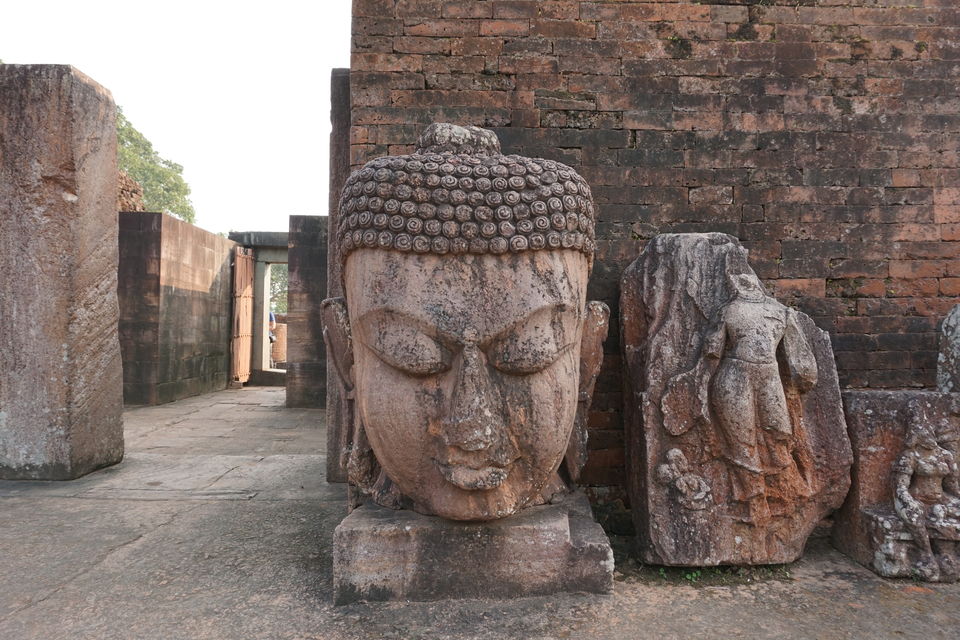
.......the people were indefatigable students and many of them were Buddhists. There were above 100 Buddhist monasteries and a myriad Brethern, all Mahayanists....There were more than ten Ashoka topes (stupas) at places where Buddha had preached. In the south-west of the country there was Pu-sei-po-ki-li (Pushpagiri) monastry in a mountain; the stone tope of this monastry exhibited supernatural lights and other miracles. Sunshades placed by worshippers between the dome and amalaka remained there like needles held by a magnet.....
- Chinese Buddhist pilgrim, Hiuen Tsang's account of his visit to Wu-t'u, Ota (Odhisha) in the 7th century, as translated by A.D.Watters
The existence of Buddhism in Odisha is as old as the religion itself. While Lumbini, Kapilvastu Bodh Gaya and Sarnath are associated with Lord Buddha's life, Odisha was associated with his teachings.
Long before Ashoka’s legendary blood-soaked victory at Kalinga in 261 B.C. and his consequent remorse and adoption of Buddhism followed by his pioneering role in the spread of this faith to the rest of the world, Buddhism had gained foothold in Kalinga during the lifetime of Buddha (around 400 B.C.). Two honey traders from Odisha, Tapusa and Bhallika were among the first disciples of Lord Buddha. They met him on their way to Madhyadesa (present day Nepal) during the seventh week of his Enlightenment. The spirit of their dead relative had directed them to pay their homage to Buddha. Buddha offered them eight strands of his hair, which these merchants took to their native city, Asitanjana in Odisha. Here they placed them in a Chaitya.
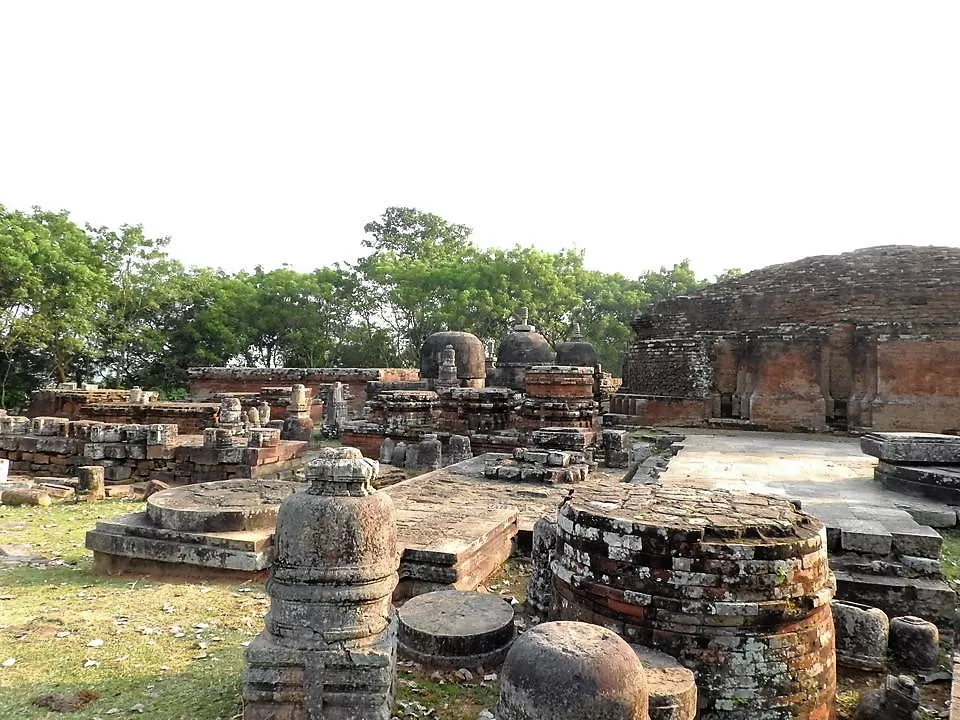
Between the 8th-10th century, Buddhism was the state religion in the coastal region of Odisha under the Bhaumakaras and this period also saw evolution of tantric form of Mahayana Buddhism. The influence and impact of Buddhism continued in Odisha until 15th century. The long heritage of Buddhism in this region is testified by the presence of numerous stupas, viharas found across Odisha. Some of them having been excavated as recently as May 2017, when a 1400 year old idol of Lord Buddha with seven-head snake from Govindapur area near Banapur in Khurda district of Odisha was discovered.
Hiuen Tsang's account indicates that Pushpagiri was an important Buddhist site in ancient Odisha. Scholars believe that Biraja (modern Jajpur) was a sacred land of Buddha Padmaprabha and the cradle of Mahayana, supported by fact that Jajpur and its neighbourhood are seen to be rich in Mahayanic antiquities. Among the tourist circuit, popular Buddhist archaeological sites in Odisha are Ratnagiri, Lalitgiri and Udaygiri, popular known as the Daimond Trangle.
RATNAGIRI
It was almost evening as we drove from Bubhaneshwar to Ratnagiri along long winding roads, pass hamlets with mud houses and roofs thatched with dried rice leaves, village ponds whose waters reflected groves of toddy or cashew palms or more often a Banyan tree, fields stretching out into flat rolling planes of straw- colored ripe rice fields, small hillocks with rust colored soil. We crossed tributaries of Brahmani and Birupa rivers, only partly filled, with most of the rain water having flowed into the great delta of the Mahanadi. There was a calmness in the air as we approached our destination - Ratnagiri, the site of a major Buddhist monastery in Jajpur district of Odisha and is known to have the most extensive ruins.
Geographically, Ratnagiri is an isolated hill of the Assia range, 4 miles north east of Gopalpur and stands on a small steam named Kelua, a tributary of Birupa.
While the major structures of the monastery were still in place, numerous fragments of structures and architectural pieces were strewn across in utter neglect - ravaged by time and humans.







Ratnagiri and other Buddhist monasteries in Odisha show case master pieces of Buddhist art which are believed to have influenced contemporary Buddhist art in South East Asia. Most of the sculptures found here date back to 8th and 9th centuries. Below are some of the most intricate pieces of art found in the main Monastery in Ratnagiri :







Some of the structures (see below) appear to be older than others and could probably belong to another time line and school of art:



The door to salvation.....




Life always finds a way and the cycle of death, decay and rebirth goes on....


LALITGIRI
The sun was almost down when we reached Lalitgiri. In the fading dusk and a rising moon still pale in comparison to the overwhelming ruddiness of the setting sun, the brick structures of the dilapidated monasteries at Lalitpur appeared to be in a deep slumber. Symbolic of the state of Buddhism in India. A faith of compassion that once flourished, embracing a major part of the subcontinent in its silent sweep, was now fading in its place of birth. There were hardly any tourist, barring a group of Germans. Most locals visit Ratnagiri and Lalitgiri for weekend picnics on its well maintained green lawns and shady trees. The Mahakali or Shiva temples that I invariable found near most of the Buddhist sites, would have a stray devotee or too. But today, the Buddha's message of ahinsa and universal brotherhood have few takers in this land which appears to be increasingly straying from the path of peaceful co-existence.
Lalitgiri, is one of the earliest Buddhist sites in Odisha. It is also inferred that this site maintained a continuous of presence of Buddhism, unbroken, from 3rd century BC to 10th century AD. The excavations carried out by the ASI at Lalitgiri have unearthed remnants of a large stupa on the hill. Within the stupa, two rare stone caskets were found with relics of Buddha; this was the first such find in Eastern India. An ASI board gives the following a summary about this site:







Photo credits: Rupa and Razi Abdi
Glossary:
Amalaka: A truncated elleptical and fluted crown in Hindu and Buddhist shikharas resembling and Amalaka (amla, gooseberry) fruit.
Bhaumakaras: In the first, half, of the eighth century A. D. a dynasty called Bhauma or Kar (also known as Bhaumakara) established its rule over the coastal belt of Odisha. The capital of this dynasty, called Guhadevapataka or Guhesvarapataka was situated near modern Jajpur town of the Jajpur district.
Chaitya :a Buddhist temple or prayer hall with a stupa at one end
Relic: In religion, a relic usually consists of the physical remains of a saint or the personal effects of the saint or venerated person preserved for purposes of veneration as a tangible memorial.
Stupa: A type of Chaitya containing Buddhist relics or holy objects such as Lord Buddha's mortal remains.
TRAVEL TIPS
All three sites, i.e. Lalitagiri, Ratnagiri and Udaygiri are located 90 kms from Bhubaneshwar and 60 kms North East of Cuttack.
If you start from Budhneshwar after an early breakfast you will have enough time to cover all the three sites. We started after lunch and could not cover the third Buddist site of Udayagiri.
The museum at Ratnagiri is open from 10am to 5pm, and closed on Fridays. We were there on Friday and could not visit it.
REFERENCES
Chanda R. 1998. Memoirs of the archaeological survey of India no.44: Exploration in Orissa, ASI, New Delhi
The above article was published in https://travelnaama471249025.wordpress.com/
Frequent Searches Leading To This Page:-
Best of Orissa, A Ten Day Itinerary of orissa, 07 Nights and 08 Days itinerary of orissa, Odisha 3 Nights & 4 Days Tour, Exotic 4 Nights 5 Days Orissa Tour Package









